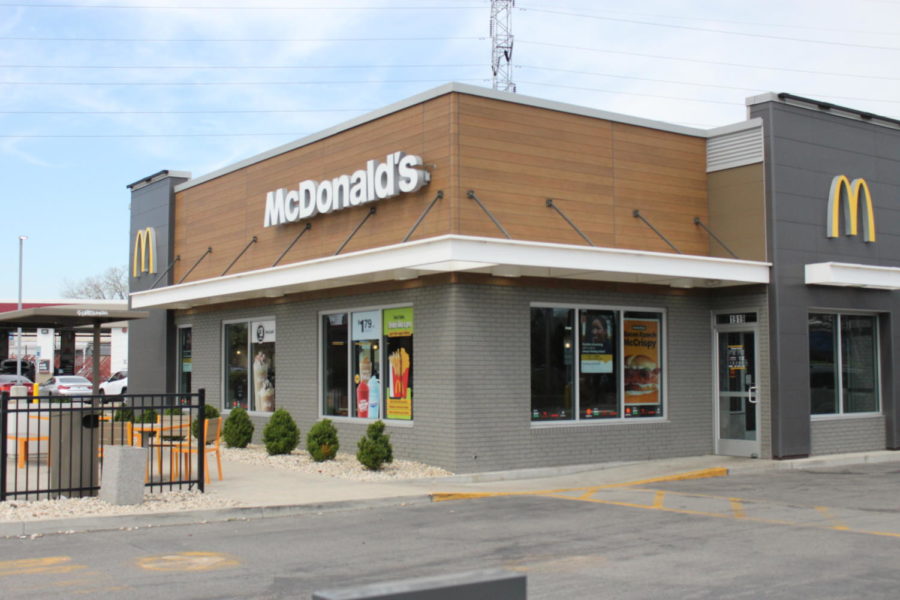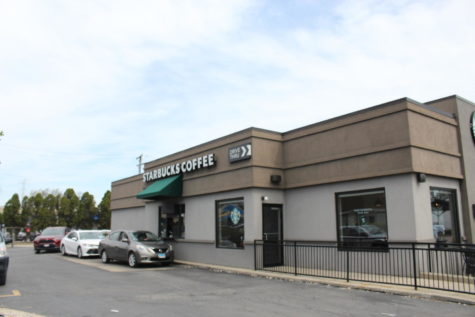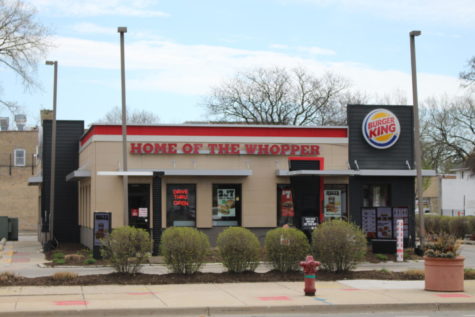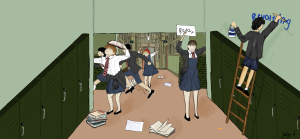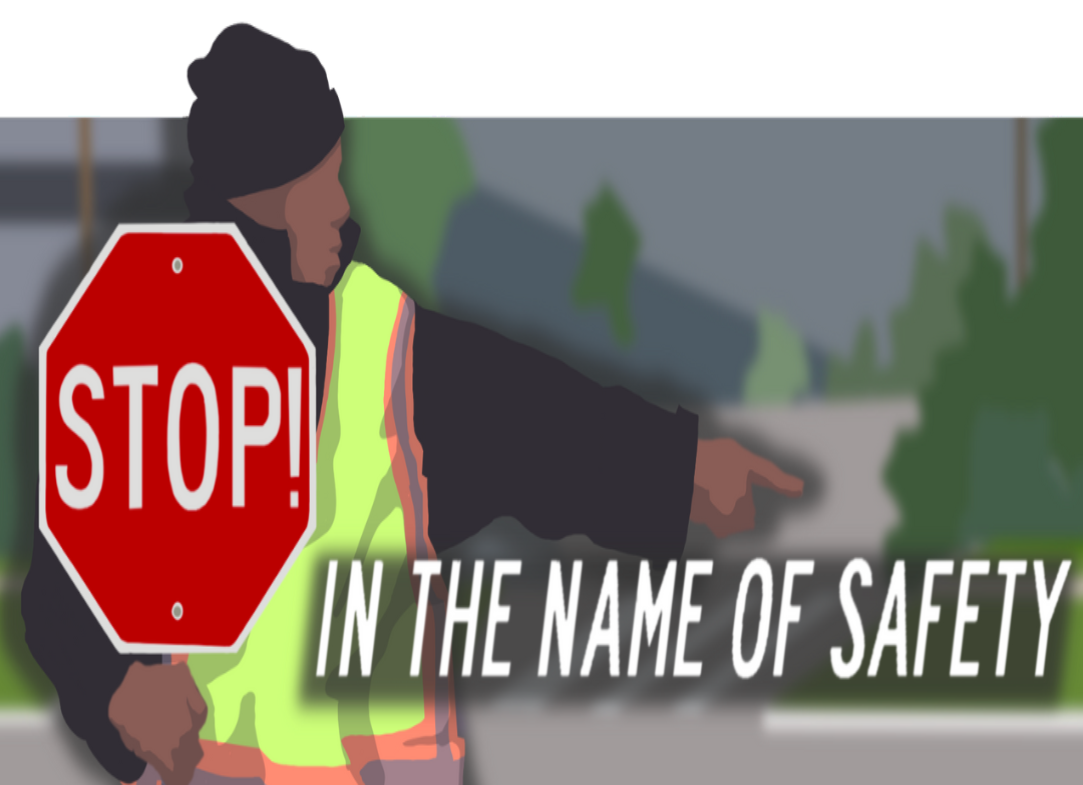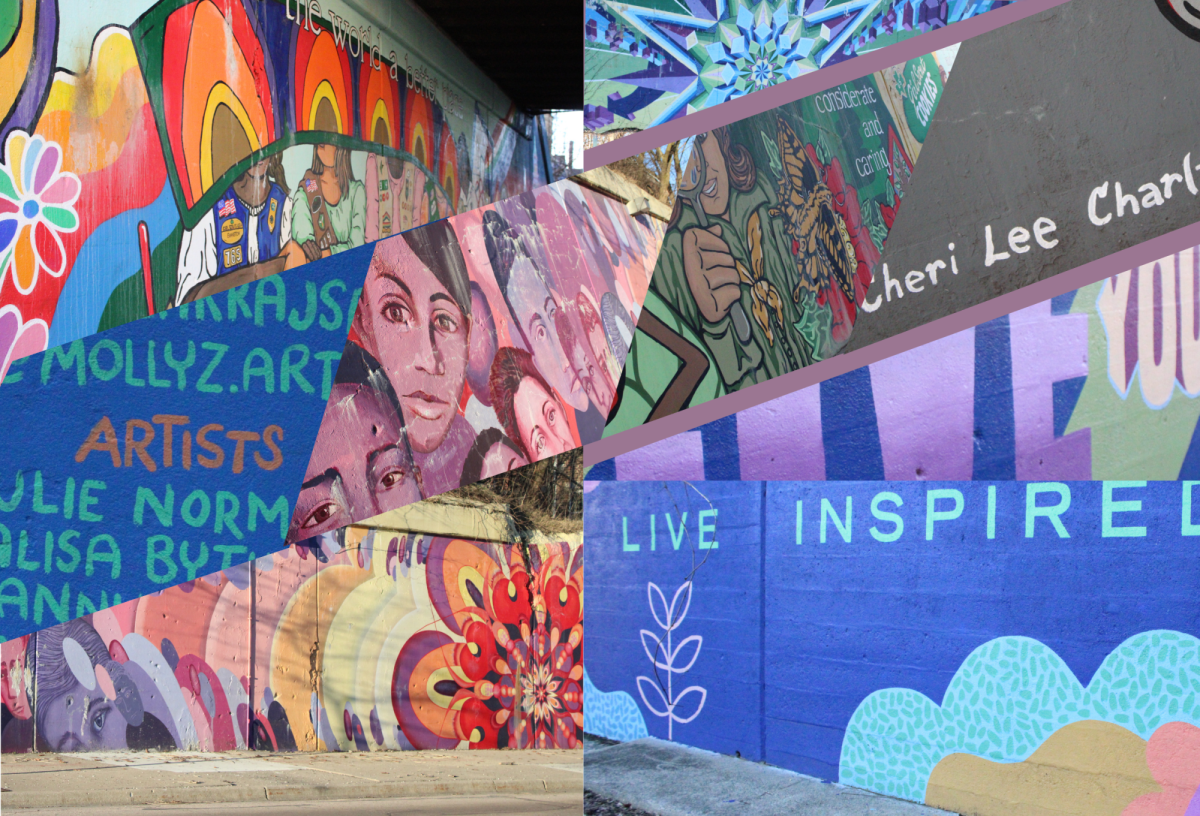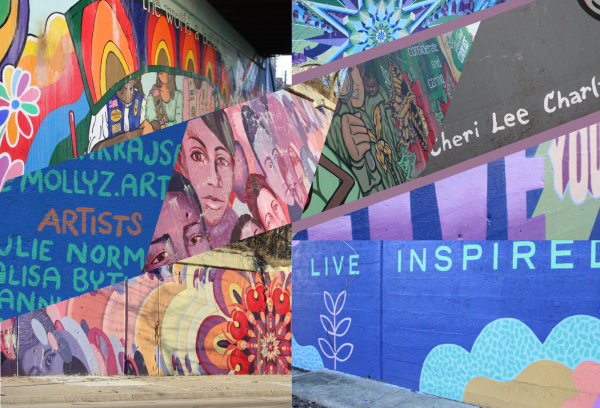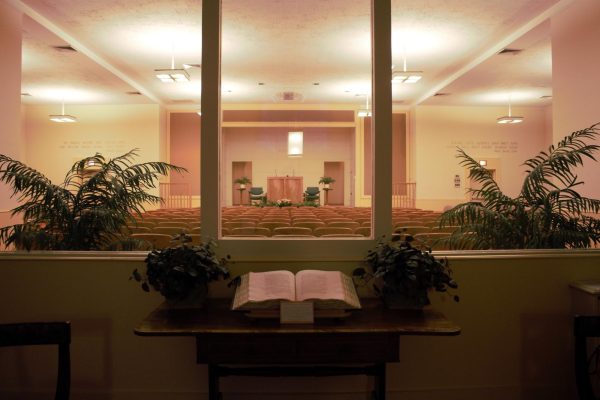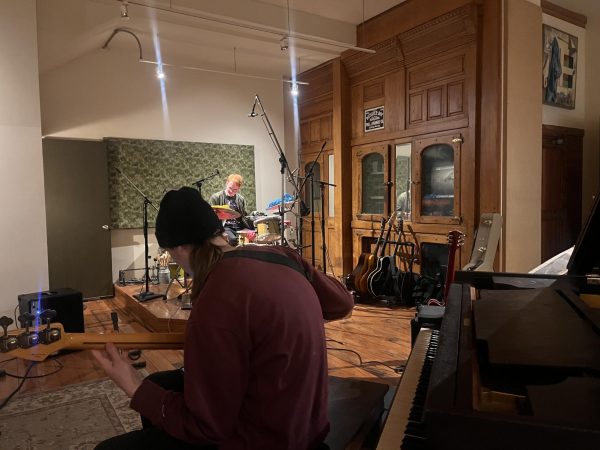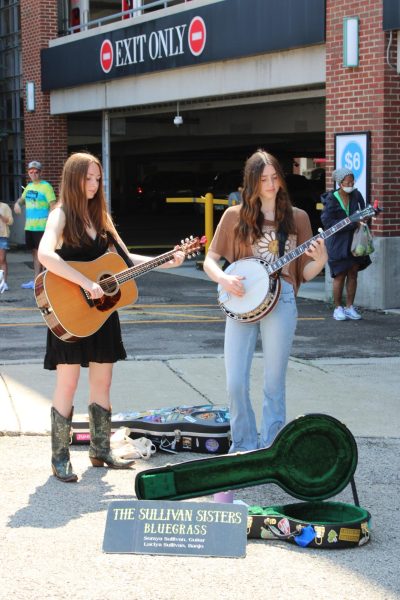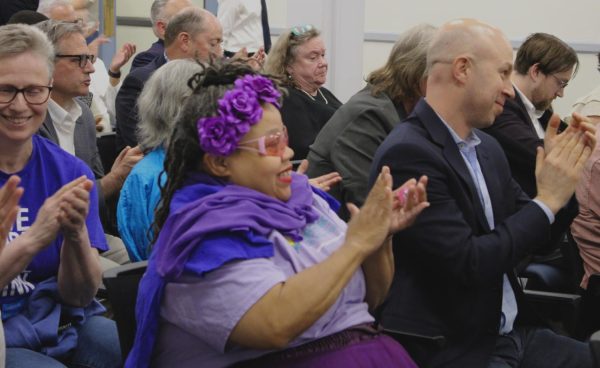Changes in Evanston Plaza hours disrupt after-school routines
Sanctuaries for students after school implement restrictions in an effort to minimize chaos from high school clientele
April 20, 2023
The bell rings at 3:35 on an icy January afternoon. Students groggily filter out of their last period class and out the main doors. Those who have warm ways of getting home quickly vanish, while the walkers make their way to one of the winter weather sanctuaries nearby ETHS. Students trudge the one block over to Starbucks, located on the corner of Dempster and Dodge. When arriving, shivering students are greeted with a single piece of white paper taped to the front door.
All hope for a warm drink on a frosty walk melts away.
Starbucks’ absence was the first of several restaurants that closed for after-school hours in Evanston Plaza, which contains an array of food establishments only a short walk away from ETHS. The closings were in response to disturbances caused by ETHS students during after-school hours.
Sophomore MJ Maus is one of many ETHS students who decide to leave campus during their lunch periods. Maus walks to the plaza with two friends and rotates through Starbucks, Dunkin Donuts and McDonalds on a weekly basis. For Maus, the tension at each business is palpable.
“During lunch, the atmosphere is a little off,” they state. “I’ll enter Starbucks and see high schoolers eating, but the staff seems to be eyeing them weirdly. Sometimes it’s not as intense, but other times, it’s very present. I wouldn’t say the atmosphere is rowdy, but sometimes a bit crowded.”
The atmosphere is arguably more hectic in the minutes and hours after school, which affects the stress levels of employees.
“At Starbucks, there’s definitely a lot of stress on the baristas because they have so many different orders and so many kids to take orders from. They do usually seem stressed when I’m there. It sort of quiets down after everyone stops arriving and starts eating instead, but they still have to deal with all of the high school kids in the restaurant,” Maus observes.
This student-based stress isn’t unique to Starbucks. Junior Harry Petroshus has experienced a lot of added pressure as a worker for the Evanston Plaza’s Paninos since October 2021.
“Teens are louder and don’t fully understand the social cues within a restaurant. It’s mainly because we haven’t spent as much time eating in [a restaurant] on our own.”
Nearby Starbucks and Paninos, McDonalds stands as one of the most frequented lunch spots for ETHS students. Its close location and quick, hot meals give reason for its popularity. Similarly to other restaurants in the plaza, McDonalds has had difficulties with the stress of busy hours.
Mariana, who chooses not to share her last name, has been employed at McDonalds for four months. In her short time, she has seen multiple ways that McDonalds has been affected by the rush of students.
“When the kids are here, we need to worry more about the orders,” she explains. “We can’t place the bags right where we usually would and just get back to work, because they might take someone else’s bag. With the new rush of kids, stealing has become a problem, and we end up having to be worried about everything.”
Stealing has become a problem, and we end up having to be worried about everything.
— McDonalds employee Mariana
To lighten the load on employees and reduce chaos in the restaurant, McDonalds practiced a new strategy from January to March. During that time, Mariana explained the policy.
“Right now, we lock the doors to have more control. Usually it’s only about 40 minutes between 3:45-4:30 or just until the kids leave. Afterwards, we open the doors,” she says.
This new strategy decreased sales but also limited the amount of students and reduced the chaos.
“Before we started locking the doors, there would be a lot of students who would stay until 6 or 7 p.m.. That was the busiest hour. Now we have the most students during lunch time,” Mariana states.
Even with changing rules after school, lunch time still brings plenty of students down Dodge Avenue and into Evanston Plaza’s McDonalds. As the weather warms up and more students choose to leave school grounds for lunch, McDonalds continues to see the same, dependable students returning for lunch day after day.
“Right after school, it was really busy,” Mariana says. “It was okay, because we were making orders, but the people were just crazy. [During lunch time,] we have a lot of similar problems, but the people are more chill. They’re more relaxed; they order, eat and they leave. They make [fewer] messes.”
Despite the weight that comes with students in restaurants, workers appreciate the business that students bring.
“It’s a more successful business when students are here; [there are] more orders and a lot more money,” Mariana continues.
In recent weeks, the Starbucks on Dempster and Dodge has reopened after school. This was after Second Ward alderwoman Krissie Harris brought together ETHS administrators, Evanston Police Department members and other community groups to establish a plan to keep the area under control while keeping it accessible to students.
The plan places multiple community outreach supervisors in the plaza to control conflict. By making rounds between Subway, Burger King, McDonalds and Starbucks, they hope to limit disputes and relieve any tension between students. This new program will hopefully take stress off of the food service workers who were not equipped to handle student conflict.
“I guess having more surveillance might seem excessive to some people, but if having officers is the best way to help everyone feel more safe and help out the workers, then I’m glad they’re doing that,” junior Ava Rosenberg remarks. “All businesses have to keep making money.”
Creating a safe, accessible and comfortable environment for a large number of high schoolers can be a difficult task. The freedom that comes with being in a public setting with a group of friends can sometimes override the responsibility that children are taught from a young age. But by creating new solutions, such as patrolling officers, Starbucks and other restaurants hope to ease tension and improve the community surrounding ETHS.
“I think the staff in the Evanston Plaza businesses are doing the best they can based on the situation. They’ve learned how to deal with the amount of students while being respectful. It’s everyone else’s job to respect them,” Rosenberg concludes.

